Fate gave Izabela Aragońska a chance for power and career, but at the same time put her to a hard test. She became a duchess at an early age, but soon lost almost everything. How did she manage to regain her position and, in addition, marry her daughter to the king?
Izabela Aragońska was born in 1470. Her father was the prince of Calabria, Alfonso, a representative of the Spanish Trastamara dynasty and heir to the throne of Naples. He also had the title of King of Jerusalem. Mother - Hippolytus Maria - came from the militant Sforza family who ruled Milan.

Izabela Aragońska in Beltraffio's portrait.
It was a time of the heyday of art, literature and architecture, but also of endless wars and conspiracies, in which daggers and poison were often used. And, what the princess felt the hard way, of dynastic marriages. She could read about love, but from childhood she was destined to be Gian Galeazzo Sforza, her cousin a year older, son of her uncle Galeazzo Maria Sforza and heir to the throne of Milan. She married him in February 1489, just six months after her mother died.
The Failure's Wife
The marriage did not bring much happiness to the daughter of Alfonso and Hippolytus. Her spouse since the death of his father in 1476 was controlled by an ambitious uncle - Ludwik Sforza. Initially, he ruled as regent, but even after formally handing over the reins of power to the prince, he remained a gray eminence. No wonder the rightful ruler was frustrated and lost. Worse for the duchess, he preferred the shoulders of lovers to the marital alcove. As a result, a year after her marriage, not only had she not yet become pregnant, but also remained a virgin. Eventually, however, Sforza fulfilled his marital and dynastic duties. In early 1491, the son of the ruling couple, Francesco, was born.
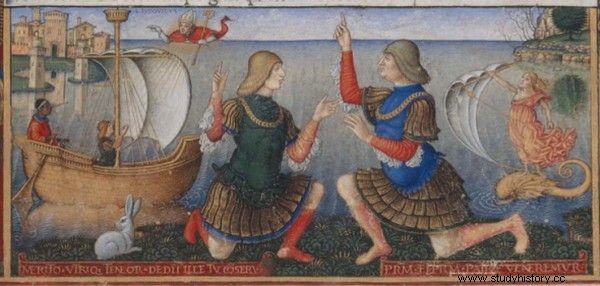
Izabela Gian Galeazzo Sforza's husband was a puppet in the hands of Uncle Ludwik Sforza. Above, both on a 15th-century miniature.
At this stage in her life, Izabela was completely subordinate to men. Gian Galeazzo drank and fought, and Louis treated her like a pushover. Apparently, this took the woman to the extreme:jealous and humiliated, she tried to poison her husband's lovers. Then, however, it was turned off, and her son's upbringing was started by a power-hungry uncle.
The Duchess was left alone, without any support. In addition, got involved in a conflict between Ludwik's wife - Beatrice, and his lover - Cecilia Gallerani (meaning "The Lady with an Ermine" from a painting by Leonardo da Vinci) . As if that were not enough, the elder Sforza also led to tension in Milan's relations with her home Kingdom of Naples. It couldn't have ended well.
Blow after blow
Meanwhile, Isabella's father, who had meanwhile assumed the throne in Naples, was preparing for a war with the king of France. He himself counted on the support of Pope Alexander VI Borgia. His daughter, knowing that nothing good would come of it, pleaded with the ruler of the Seine, incited by Louis, not to attack. In vain. Her situation worsened even more when Gian Galeazzo died in the fall of 1494, shortly after the birth of the next children - Ippolita and Bona. Now his uncle has officially become the ruling prince of Milan.
Soon more blows fell on the widow. Her father, having failed in the fight against the French, had to hand over power to his son, Ferdinand. He himself entered a convent, where he soon ended his life. His successor soon followed in his footsteps - he fell ill and died childless in 1496.
So Izabela lost not only a parent, but also a brother who could have provided her support. And this is not the end of the tragedy! Within a few years, she also buried two daughters:Bianka Maria, born after her husband's death, and Ippolita.
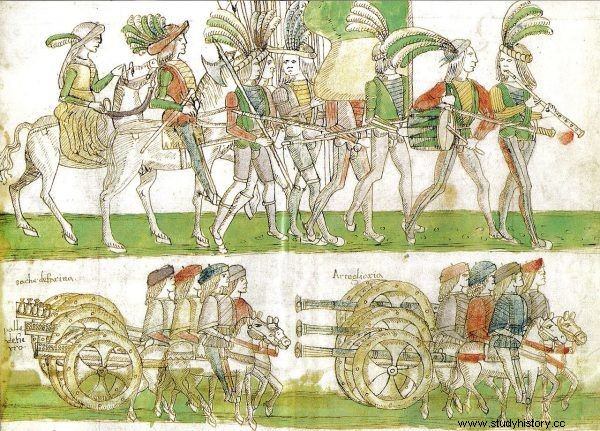
After Izabela's father lost to the French, he was forced to abdicate. The illustration shows the moment when French troops marched into Naples.
Death seemed to surround the Duchess on all sides. Her son Francesco had the right to the Milanese throne after his father, but it was clear that the hated Louis was standing in the way of power. Admittedly, the latter did not succeed too - he had a conflict with the king of France and after a few years he ended up in his dungeon - but it was no consolation. Milan fell into the hands of the French, who soon managed to lock the rightful heir of Gian Galeazzo in the convent.
What happened to his lonely mother then? With little Bona by her side, she started wandering around Italy.
The Art of Gaining Allies
Despite so many contradictions, Izabela did not despair. After all, she still had valuable contacts, even among the Borgias. Lucrezia, daughter of Pope Alexander VI Borgia, was married to her half-brother Alfonso. In turn, Jofre, the son of the Holy Father, was the husband of her half-sister Sancha. Bona's mother also decided to use contacts at the imperial court. Her sister-in-law Bianka married Emperor Maximilian I Habsburg himself. Moreover, the new king of Naples, her uncle Frederick, remembered her. He gave his niece two principalities:Bari and Rossano. She settled down with the court in the former. It made her come back to life.
Like a true representative of the Renaissance, the ruler supported science and art. She also did everything to ensure that her son regained the lost throne in Milan. Unfortunately, the son died in 1512 after an unfortunate fall from a horse. At this point, the ambitious duchess placed all her hopes on her eighteen-year-old daughter. She was determined to give her a worthy position. She even planned to marry her… to the son of the hated Louis Sforza when the young man took power in Milan. However, nothing came of it, because in 1515 the French re-seized the throne.
Bona needed another candidate. In order to find the best game for her, Isabella made Emperor Maximilian himself crazy. The fact that she was able to do this is evidenced by the fact that she persuaded the widow of her brother Ferdinand, Joanna, to bequeathed her fortune in her will. Habsburg also fell into its trap. This came in handy when his family took the Neapolitan throne from the rulers of the Trastamar dynasty.
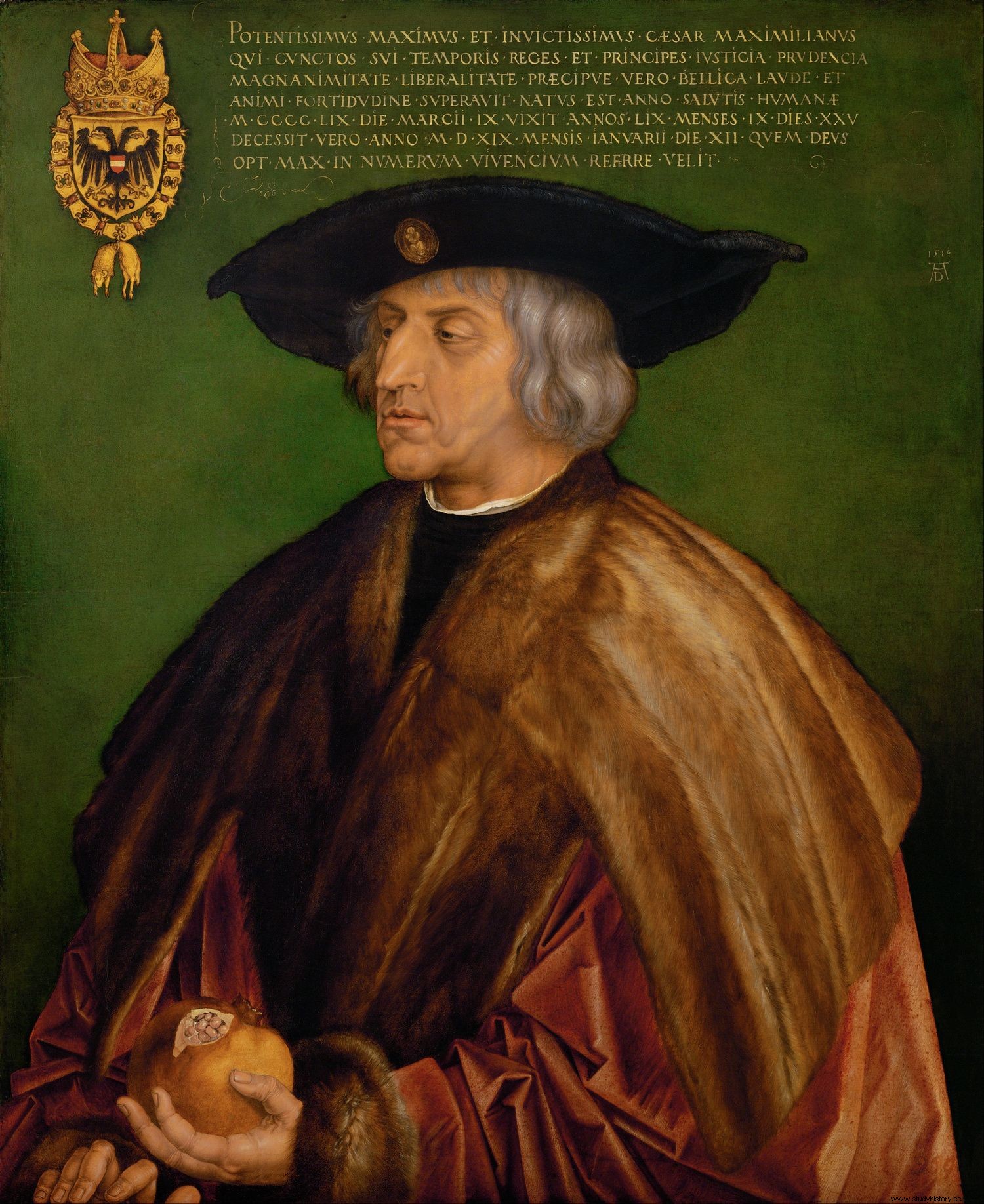
Isabella was even able to wrap Emperor Maximilian I around her finger.
As the ruler of Bari subordinate to Naples, Aragonese warmly assured the emperor of her loyalty. And since she had a daughter in marriage, it became obvious to Maksymilian that finding a suitable spouse for Bona was also in the interests of the ruling dynasty. He already had an eye on someone.
The Queen's Mother
It so happened that the king of Poland, the widowed Zygmunt I the Old, was looking for a new wife. After the Congress of Vienna in 1515, Habsburg wanted to keep Jagiellon in the orbit of his influence, recommended Bona as heiress of a great family. And since the Vistula monarch also wanted to maintain friendly relations, he looked at the candidate favorably.
In order to finally convince him, Zygmunt was sent a portrait of a potential spouse. Also, Isabella did not spare the gold from her purse to the royal advisers to present her daughter in a favorable light. The princess was taken for some years, and her bridegroom was promised not just any dowry. And when the king finally pushed his envoys to Italy, the duchess led them by the nose for a long time and calculatingly.
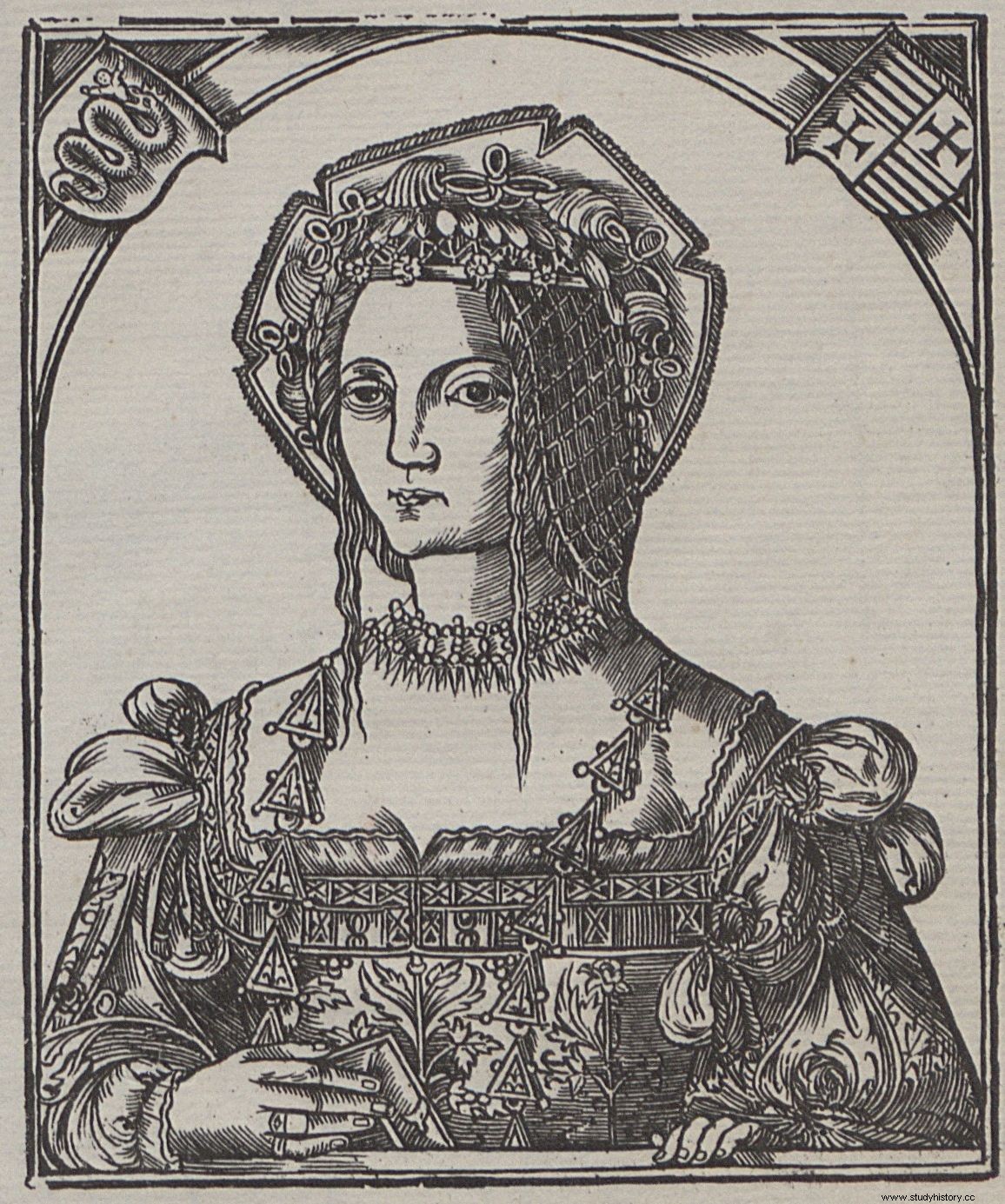
Izabela made sure that Bona became the Polish queen.
The game of cat and mouse has begun. Its effect was such that the tired and impatient Polish monarch gave way to the ruler of Bari at almost every step. It was established, inter alia, that the wedding per procura During which the groom will be represented by plenipotentiaries, will be held in Naples, and not - as initially planned - in Vienna. The dowry was to be delivered to Poland in two installments.
Izabela got her way. The moment of her triumph was Bona's parade entry into Naples for the wedding ceremony. It took place on December 6, 1517.
Life after life
The wedding preparations and the ceremony itself were so costly that Izabela almost went bankrupt. To do her best, she lived beyond her means and fell into greater and greater debts. No wonder that later she reluctantly and painfully paid out the promised dowry. Nevertheless, it paid off:her daughter became queen! And she knew who she owed it to. When in 1519 she gave birth to Zygmunt's first child - a girl - she was, of course, named after Izabela.
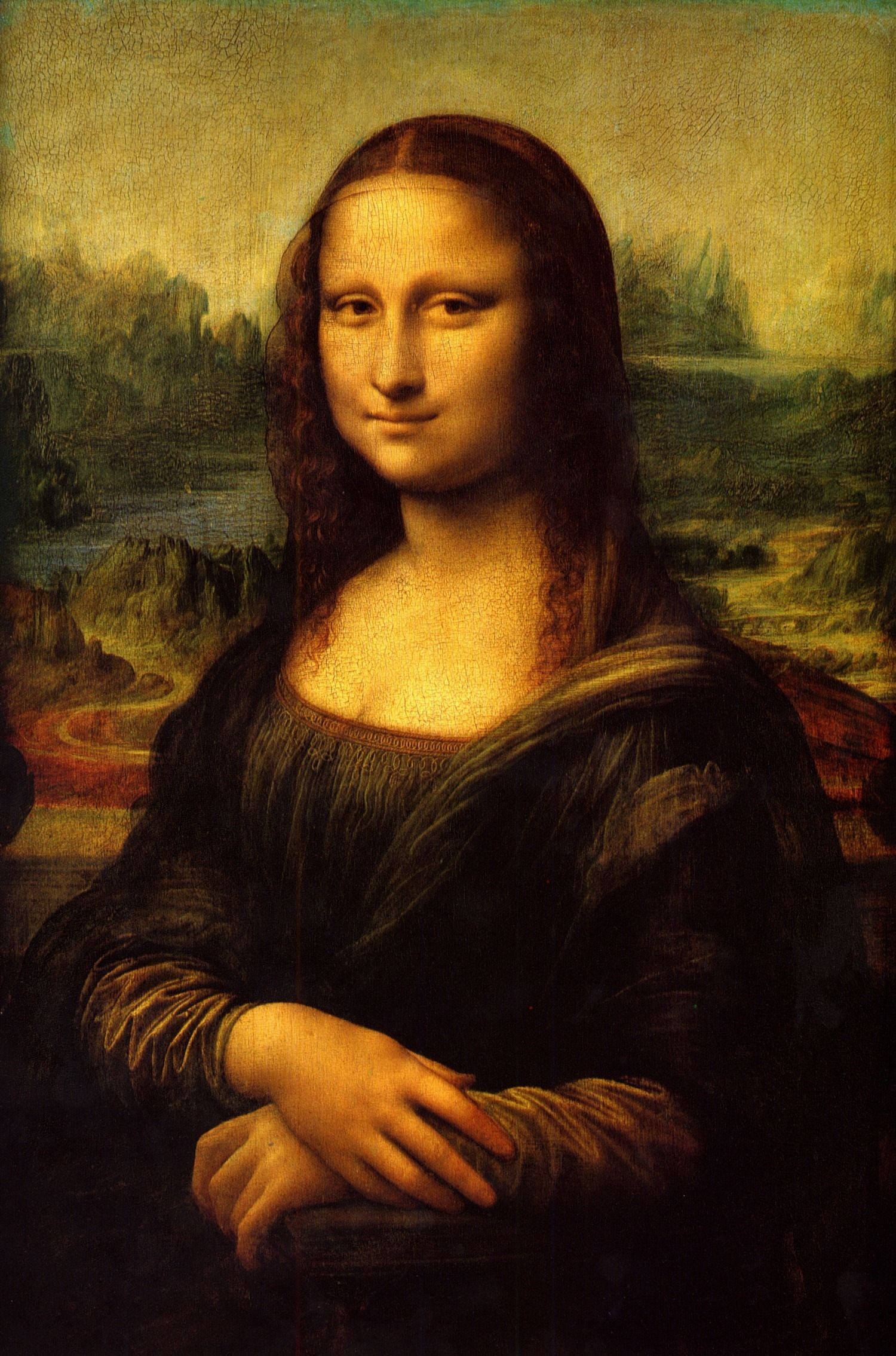
According to some, the famous Mona Lisa is none other than Izabel, who was supposed to have an affair with Leonardo.
Then other children were born, including the long-awaited boy:Zygmunt August. The Duchess of Bari celebrated his birth loudly, but then - it was 1520 - her days were numbered. The ruler's body had been devoured by syphilis for years. She treated her in accordance with the advice of contemporary medics, i.e. by taking mercury. She died in 1524 at the age of 54.
Her beauty, efficiency and tough character survived in her daughter, who colorfully went down in the history of Poland. Izabela herself was pushed to the margins of history for a long time. She has emerged from it only recently, along with rumors that she was romancing Leonardo da Vinci himself. It is her brilliant artist who allegedly portrayed her as Mona Lisa. It is even speculated that Bona may have been his daughter! But that's a completely different story…
Inspiration:
The article was inspired by a biographical novel by Magdalena Niedźwiedzka entitled Bona , Prószyński Media 2018.
Selected bibliography:
- Antonio Perria, Cruel Sforza , PIW 1985.
- Kamil Janicki, Ladies of the golden age , Mark 2014.
- Jacqueline Glomski , Patronage and Humanist Literature in the Age of the Jagiellons , University of Toronto Press 2007.
- Ann Gibbons, The Thousand-Year Graveyard , "Science" # 342 (2013).
